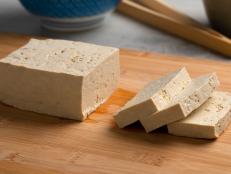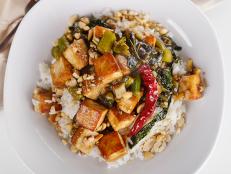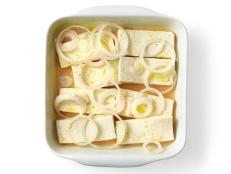If You Don’t Know What To Do With Tofu, Just Go to Fong On and Eat Tofu Pudding
According to Paul Eng, the owner of New York City’s oldest tofu shop, its velvety doufu fa is what he calls the "gateway tofu."


Photo courtesy of Fong On
Whatever image you conjure up when thinking of a tofu maker, it likely won’t match that of Paul Eng.
He is part of the third generation to run Fong On, New York City’s oldest tofu shop, established in 1933 by his grandfather and a few partners. Eng had been many things – a photographer, architect, musician, graphic designer – before his career shift to what he now calls a “tofu whisperer.”
Despite growing up at the Chinatown tofu shop, the youngest of four never expected to get into the family business. But after returning to New York City from living in Moscow — where he had met his wife Marina — he sought stability for his own growing family.
Fong On, then called Fong Inn Too, had shuttered its Mott Street location in 2017. Eng’s brothers, who had taken it over from their parents, saw business decline as its immigrant clientele moved away from Chinatown and wholesale numbers dipped. But Eng had a feeling, with some modernization and marketing, that Fong On could be revived.

Photo courtesy of Fong On
“Most of the big tofu manufacturers have moved to New Jersey with more space. We can’t compete, so I went the other route, ready-to-eat tofu. Our tofu pudding is the gateway tofu,” says Eng, referring to doufu fa, creamy silken tofu typically eaten with a sweet ginger syrup. “Typically, people don’t know what to do with tofu. I tell them, just come here and eat tofu pudding.”
In 2019, Eng reopened Fong On under its original name at 81 Division Street, where tofu production had always taken place. The storefront is bright and airy, with a red brick exterior and interior walls covered in white subway tiles, quite different from its former cramped, no-frills space.
Clad in a band tee, jeans and a newsboy cap, Eng now spends his day making all of the store’s signature products, from the tofu and soy milk to the rice cakes and grass jelly. Twice a week on Tuesdays and Fridays, he’s in the back churning out soymilk and pressing tofu with the help of a longtime employee. The two work side-by-side hauling buckets of soybeans that have soaked in water overnight, pouring them into steel machines that will then press them into soy milk.
This process is quite different from the ones that the generations before him have used. When his grandfather started the business, each square of tofu was pressed with stones; his parents eventually upgraded to a pneumatic press.
To reopen Fong On, Eng had to essentially start from scratch, recreating family recipes using loose guidelines from family members, old employees and, because it is, after all, the 21st century, YouTube.
“The people who were doing the tofu and everything before, they learned it by rote mechanics,” he says. “They were taught with certain tools and measurements, and they just did it. They didn’t know how to variate it or understand the science behind it. I had to combine what they told me with what I saw on YouTube videos to match the understanding.”

Photo courtesy of Fong On
At its heyday, Fong On went through 2,400 pounds of soybeans a day. Now, it’s just 150 pounds, but that’s by design. As he made plans to restart Fong On, Eng realized that he couldn’t scale up like large tofu factories. Rather than attempt to make everything Fong On had once sold — over the years, the menu had expanded to include rice rolls, noodles and other items — Eng focuses on what the business was best known for: fresh, high-quality soy products and bok tong gou a.k.a. bouncy glutinous rice cakes. What sets Fong On’s apart is its minimal ingredients and, for its soy milk, a double grind system that produces the cleanest, best-tasting drink.
“It takes time. It’s a process,” he says over the roaring of the industrial machines.
As the newest generation to take over the business, Eng is also aware that the market is shifting. While Fong On’s tofu may still appeal to its original demographic of Chinese American immigrants, the growing appetite for artisanal products lies with a younger audience, whose tofu preferences may be different from that of previous generations.
“Traditional Asian dishes use soft tofu. But people who buy tofu are generally younger now and with the adaptation of a more Western perspective, they buy firm,” says Eng. “I was one of those who wanted firm also, but as I started doing the tofu myself, I actually started preferring the soft more.”

Photo courtesy of Fong On
Eng has also added a few new twists to Fong On’s classic products. The beloved doufu fa now comes with sweet or savory toppings, the latter inspired by one that Eng tried during a trip to Taiwan to source machinery. There’s a matcha version of the rice cakes, which Marina steams from scratch. The shop also has an Instagram account and merch, including T-shirts designed by Eng and a tote by their daughter, Sonya.
Fong On still has a handful of local restaurant clients, among them Eleven Madison Park, Planta Queen and Little Banchan Shop, but Eng’s goal, for now, is to keep production manageable for his small team.
“It’s a mom-and-pop business,” he says. “It’s always been a mom-and-pop business.”
Related Content:
































